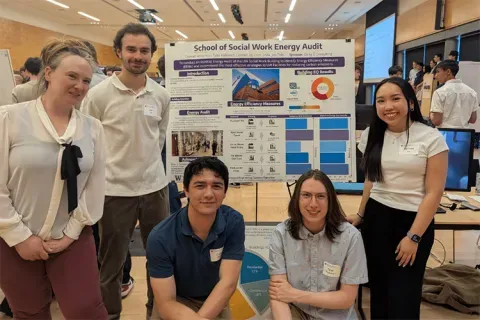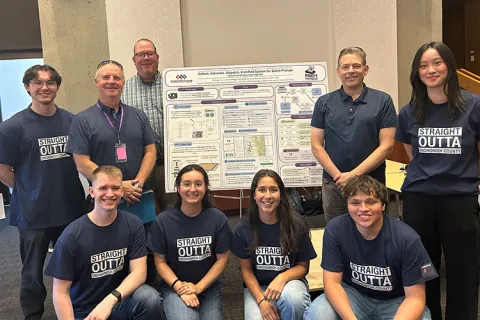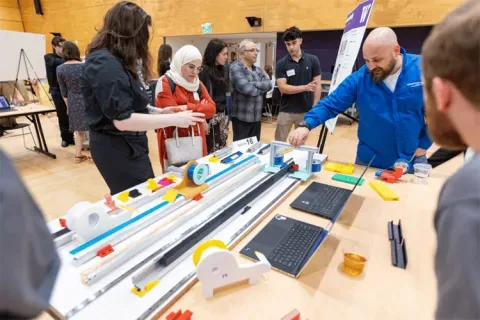UW Applied Physics Laboratory (APL)
Track Foraging Bats in the Union Bay Natural Area
This student team will work to build ultrasonic microphone arrays to track foraging bats in the Union Bay Natural Area (UBNA) that is immediately adjacent to the UW campus. Bats are an important ecosystem indicator, and their biological sonar system continues to inspire engineers in adaptive sensing designs. Data collected in the UBNA using low-cost single microphone recorders since 2021 has shown stable bat activities in the UBNA in May to early October. In particular, in the call sequences frequent foraging events are observed that simultaneously involve multiple bat individuals or species. By working to deploy microphone arrays in the UBNA, this student team will work to open the door for understanding the rich behavioral repertoire of foraging bats as they interact with their prey and each other through both sounds and movements; it is possible that engineering inspiration for sonar-guided autonomous sensing may be drawn from the results accomplished with this project. Bats in the UBNA emit echolocation calls in the ultrasonic frequency range (25-80 kHz; with three major groups: 25-35 kHz, 30-40 kHz, and 40-80 kHz). In this frequency range sounds are subject to strong absorption. In addition, bat echolocation calls are directional, with the beampattern dynamically modulated depending on the foraging context (e.g., distance to prey, prey type) and the environment. In general, the higher the frequency, the stronger the air absorption, and the more directional the sonar beam. These factors in combination limit the effective spatial span of a microphone array, even though a longer baseline is typically favorable for source localization. The microphone array this student team will work to develop through this project should be able to track bats in all three frequency groups and should be easily deployable by a two-person team in the UBNA field condition. The array should be able to operate autonomously, with configurable on-off cycles, the capability to collect full-bandwidth data for post-analysis, and a minimum length of continuous operation of 12 hours. The outcomes this student team will work to accomplish include: -- Microphone arrays (2-3, depending on material cost), operating software, design diagrams and code documentation -- Recording from lab and field testing -- Implementation of tracking algorithms (optional, but this will be super cool to see!)
Faculty Adviser(s)
Wu-Jung Lee, Electrical & Computer Engineering
Related News

Mon, 10/13/2025 | UW Mechanical Engineering
Capstone collaboration leads to award
An ME capstone team received first place for its energy audit of the UW School of Social Work building.

Thu, 07/17/2025
UW engineering students develop smart ballot solution
UW engineering students develop smart technology solution to improve ballot collection for Snohomish County.

Mon, 07/07/2025 | UW Mechanical Engineering
Capstone creations
Students displayed innovative capstone design projects at the 2025 expo.

Fri, 09/20/2024 | UW Civil & Environmental Engineering
Smarter irrigation for a greener UW
A new project combines satellite data with ground sensors to conserve water and create a more sustainable campus environment.